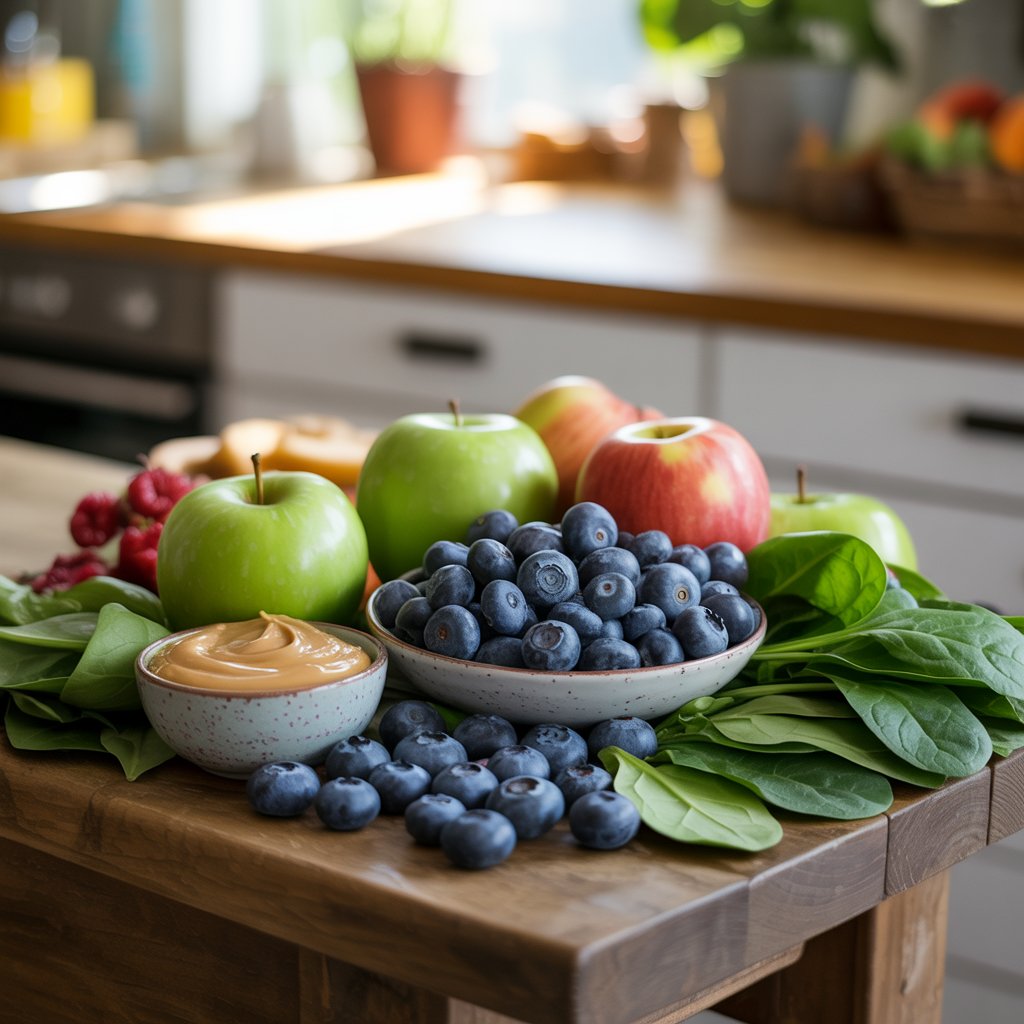Practical Meal Planning Strategies for Autism Families

Creating Balanced Weekly Meal Plans
Planning meals for a child with autism doesn't have to be overwhelming. Start small with a 3-day plan before expanding to a full week. Focus on including foods from all major groups while accommodating sensory preferences.
Try this simple structure:
- Breakfast: Protein + fruit + grain
- Lunch: Protein + vegetable + grain/starch
- Dinner: Protein + two vegetables + grain/starch
- Snacks: Mix of protein, healthy fats, and carbs
Visual schedules work wonders! Create a magnetic board with food pictures so your child can participate in meal planning. This builds predictability and reduces anxiety around mealtimes.
The magic happens when you find your rhythm. Many families swear by theme nights:
- Meatless Mondays
- Taco Tuesdays
- Pasta Wednesdays
- Breakfast-for-dinner Thursdays
- Pizza Fridays
Keep a food journal to track what works and what doesn't. You'll spot patterns in no time.
Budget-Friendly Shopping Lists and Preparation Tips
Autism-friendly eating doesn't have to break the bank. Smart shopping starts with a plan - never hit the store hungry or without a list!
Frozen fruits and vegetables are nutritional powerhouses at a fraction of fresh prices. They're already washed and cut, saving precious time. Canned options work too - just look for "no added salt" varieties.
Buying in bulk makes sense for non-perishable staples like:
- Rice and grains
- Dried beans and lentils
- Nuts and seeds
- Favorite snack items
The secret weapon? A slow cooker or Instant Pot. Throw ingredients in before work, and dinner's ready when you get home. Game-changer for busy autism families.
Shop the perimeter of the store first - that's where the whole foods live. Venture into aisles only for specific items on your list.
Don't forget about discount grocery stores, farmers markets, and community supported agriculture (CSA) programs. Many offer significant savings over traditional supermarkets.

Managing Picky Eating Without Battles
The dinner table shouldn't be a war zone. First rule: stay calm. Your anxiety transfers to your child faster than you can say "just one bite."
Food chaining works like magic for many autism families. Start with preferred foods and gradually introduce similar items that bridge to new options. If your child loves french fries, try sweet potato fries next, then roasted sweet potato pieces.
Small victories deserve celebration! Progress might look like:
- Touching a new food
- Smelling it
- Licking it
- Taking a tiny taste
- Actually swallowing a bite
Consider sensory aspects beyond taste. Temperature, texture, color, and even how foods touch on the plate matter tremendously. Divided plates are worth their weight in gold.
Give choices within limits: "Would you like carrots or cucumber with lunch?" beats "Eat your vegetables!" every time.
The secret weapon many parents miss? Get your child involved in food prep. Even simple tasks like washing produce or stirring ingredients creates connection and ownership.
Batch Cooking Methods for Busy Families
Time is precious when raising a child with autism. Batch cooking is your secret weapon for surviving hectic weekdays.
The weekend power hour changes everything. Dedicate 2-3 hours on Sunday to prep components that mix and match all week:
- Brown 3-4 pounds of ground meat with basic seasonings
- Roast 2-3 sheet pans of mixed vegetables
- Cook a large pot of rice or quinoa
- Wash and chop raw vegetables for snacks
- Blend and freeze smoothie packs
Invest in quality storage containers - glass works best for reheating without plastic chemicals.
Freezer meals save sanity on therapy days. When making family favorites like meatballs, lasagna, or chicken tenders, double the recipe and freeze half. Future you will be eternally grateful.
The slow cooker is your best friend. Pop ingredients in before breakfast, and dinner's ready when you walk in the door exhausted from appointments.
Don't aim for perfection. Some families designate one night weekly for super-simple meals (sandwich night, anyone?) or takeout. That's not failure - it's self-care.
Navigating Social Situations and Eating Away From Home
Social eating situations can trigger anxiety for both you and your child. Preparation makes all the difference.
Before restaurant visits:
- Look up menus online together
- Practice ordering with role-play
- Pack backup foods just in case
- Request a quiet table away from kitchen noise
- Bring familiar utensils if needed
School lunches deserve special attention. Work with teachers to understand lunchroom procedures. Many schools now accommodate sensory needs with quiet eating spaces.
For birthday parties, reach out to the host beforehand. Most parents are happy to share menu plans so you can prepare your child or provide similar alternatives.
Holiday gatherings with extended family can be tricky. Be direct about your child's needs without apologizing. "Sam does best when he has at least two familiar foods on his plate" sets clear expectations.
Always pack an emergency kit with:
- Shelf-stable preferred snacks
- Familiar utensils/cup
- Noise-canceling headphones
- Comfort item
Remember - advocating for your child's needs isn't being difficult. It's being a great parent.







